No products in the cart.
Taxation
 Loading...
Loading...
Byrd & Chen’s Canadian Tax Principles, 2022-2023, Volume 2, 1st edition Gary Donell Byrd Chen Clarence Byrd solution manual
Byrd & Chen’s Canadian Tax Principles, 2022-2023, Volume 2, 1st edition Gary Donell Byrd Chen Clarence Byrd solution manual
Byrd & Chen’s Canadian Tax Principles
( solution manual)
Byrd & Chen’s Canadian Tax Principles, 2022-2023, Volume 1, 1st edition Gary Donell Byrd Chen Clarence Byrd solution manual
Edition: 2022-2023, Volume 2, 1st edition
Author Name: Gary Donell Byrd Chen Clarence Byrd
contact:
Whatsapp +1 (949) 734-4773
for the Facebook page click here
for more books for ( Test Bank and Solution Manual) click here
sample free
Instructor’s Solutions Manual
 Loading...
Loading...
$44.00 $100.00
Byrd & Chen’s Canadian Tax Principles, 2022-2023, Volume 2, 1st edition Gary Donell Byrd Chen Clarence Byrd solution manual
Byrd & Chen’s Canadian Tax Principles
( solution manual)
Byrd & Chen’s Canadian Tax Principles, 2022-2023, Volume 1, 1st edition Gary Donell Byrd Chen Clarence Byrd solution manual
Edition: 2022-2023, Volume 2, 1st edition
Author Name: Gary Donell Byrd Chen Clarence Byrd
contact:
Whatsapp +1 (949) 734-4773
for the Facebook page click here
for more books for ( Test Bank and Solution Manual) click here
sample free
Instructor’s Solutions Manual
Instructor’s Solutions Manual, Byrd & Chen’s Canadian Tax Principles 2022/23 Edition
Copyright © 2023 Pearson Education Inc. 11-1
Instructor’s Solutions Manual
Chapter 11 – Solutions to Assignment Problems
Solution to AP 11-1
2019 Analysis
The required information can be calculated as follows:
ITA 3(a)
Business Income $18,000
Taxable (Grossed Up) Dividends 2,360 $20,360
ITA 3(b)
Taxable Capital Gains $ 600
Allowable Capital Losses (2,100) Nil
ITA 3(c)
ITA 3(d)
Unrestricted Farm Loss (See Note)
$20,360
(6,250)
2019 Net Income and Taxable Income $14,110
Note Ms. Breau’s farm losses are restricted as follows:
Total Farm Loss
Unrestricted Amount:
First $2,500
$10,000
($ 2,500)
One-Half of $7,500 ($10,000 – $2,500) (3,750) (6,250)
2019 Restricted Farm Loss $ 3,750
As noted in the problem, none of the losses can be carried back before 2019. This would
leave the following 2019 loss carry over balances:
• 2019 Restricted Farm Loss $3,750
• 2019 Net Capital Loss [($2,100 (ITA 3(b)(ii)) – $600 (ITA 3)(b)(i))] $1,500
In this first year the taxable income is less than the required $15,000 to fully utilize available tax
credits; however, there is no choice to limit any of the ITA 3 amounts to a smaller amount so as
to achieve the $15,000 taxable income.
2020 Analysis
The required information can be calculated as follows:
ITA 3(a)
Farm Income $ 2,000
Taxable (Grossed Up) Dividends 2,950 $4,950
ITA 3(b)
Taxable Capital Gains
Allowable Capital Losses
$ 1,000
Nil
1,000
Instructor’s Solutions Manual, Byrd & Chen’s Canadian Tax Principles 2022/23 Edition
Copyright © 2023 Pearson Education Inc. 11-2
ITA 3(c)
ITA 3(d)
Non-Farming Business Loss
$5,950
(14,000)
2020 Net Income
2019 Net Capital Loss
Nil
($1,000)
2020 Taxable Income Nil
Since there are $1,000 of net taxable capital gains this year, and the problem states that Ms.
Breau would like to deduct the maximum amount of net capital losses, the net capital loss of
$1,000 is applied against the ITA 3(b) amount of $1,000, which effectively increases the
2020 non-capital loss.
The 2020 non-capital loss is calculated as follows:
Business Loss $14,000
Add: 2019 Net Capital Loss Deducted 1,000
ITA 3(c) Income (5,950)
2020 Non-Capital Loss $ 9,050
The entire 2020 non-capital loss could be carried back to 2019, but since Ms. Breau requires
$15,000 in taxable income to fully utilize her tax credits, no carry back is contemplated.
There would be the following loss balances at the end of 2020:
• 2019 Restricted Farm Loss (Unchanged) $3,750
• 2019 Net Capital Loss ($1,500 – $1,000)] $ 500
• 2020 Non-Capital Loss $9,050
2021 Analysis
The required information can be calculated as follows:
ITA 3(a)
Non-Farming Business Income $30,000
Farm Income 3,150
Taxable (Grossed Up) Dividends 3,963 $37,113
ITA 3(b)
Taxable Capital Gains $ 2,000
Allowable Capital Losses Nil 2,000
2021 Net Income $39,113
2019 Restricted Farm Loss (Equal to Farm Income) (3,150)
2019 Net Capital Loss (Less than $2,000) (500)
2020 Non-Capital Loss Carry Forward (All) ( 9,050)
2021 Taxable Income $26,413
There would be the following loss balances at the end of 2021:
• 2019 Restricted Farm Loss ($3,750 – $3,150) $ 600
2022 Analysis
The required information can be calculated as follows:
Instructor’s Solutions Manual, Byrd & Chen’s Canadian Tax Principles 2022/23 Edition
Copyright © 2023 Pearson Education Inc. 11-3
ITA 3(a)
Taxable (Grossed Up) Dividends $ 6,450
ITA 3(b)
Taxable Capital Gains $ 2,250
Allowable Capital Losses (7,250) Nil
ITA 3(c)
ITA 3(d)
Non-Farming Business Loss
$ 6,450
($19,000)
Farm Loss (2,000) (21,000)
2022 Net Income and Taxable Income Nil
The 2022 non-capital loss can be calculated as follows:
Business Loss $19,000
ITA 3(c) Income (6,450)
Non-Capital Loss $12,550
Farm Loss (Unrestricted) 2,000
2022 Non-capital loss $14,550
Although technically the farm loss is accounted for separately from the non-capital loss, since
the farm loss is less than $2,500 it is treated as an unrestricted farm loss and can be applied
against all types of income. Given the carry over rules are the same, we have treated this farm
loss as part of the non-capital loss carry over although technically the 2022 non-capital loss
would be $12,550 and the 2022 Farm loss would be $2,000. The preceding loss carry over of
$14,550 is available for carry back three years to 2019.
The 2022 net capital loss would be equal to $5,000 [ITA 3)(b)(ii) $7,250 – ITA 3(b)(i) of
$2,250)]. $1,500 of the 2022 net capital loss can be applied to the 2021 year as there are
$1,500 ($2,000 – $500) in net taxable capital gains remaining in 2021 as the basis for a carry
back. This leaves a balance of $3,500 ($5,000 – $1,500).
If both the $14,550 non-capital loss and the $1,500 net capital loss were carried back to 2021,
the result would be a Taxable Income of $10,363, less than the $15,000 that is required to
fully utilize Ms. Breau’s available tax credits. As the 2021 net capital loss can only be deducted
to the extent of net taxable capital gains, it would be advisable to first claim the full amount of
this loss. Based on this view, the deduction of the 2022 non-capital loss will be limited to $9,913
($26,413 – $15,000 – $1,500), an amount that will provide for the full use of Ms. Breau’s 2021
tax credits:
2021 Taxable Income (As Reported) $26,413
2022 Non-Capital Loss ( 9,913)
2022 Net Capital Loss ( 1,500)
2021 Revised Taxable Income $15,000
These loss applications leave Ms. Breau with her required $15,000 in 2021 taxable income. The
following loss balances remain at the end of 2022:
• 2019 Restricted Farm Loss $ 600
• 2022 Net Capital Loss ($5,000 – $1,500)] $3,500
• 2022 Non-Capital Loss ($14,550 – $9,913) $4,637

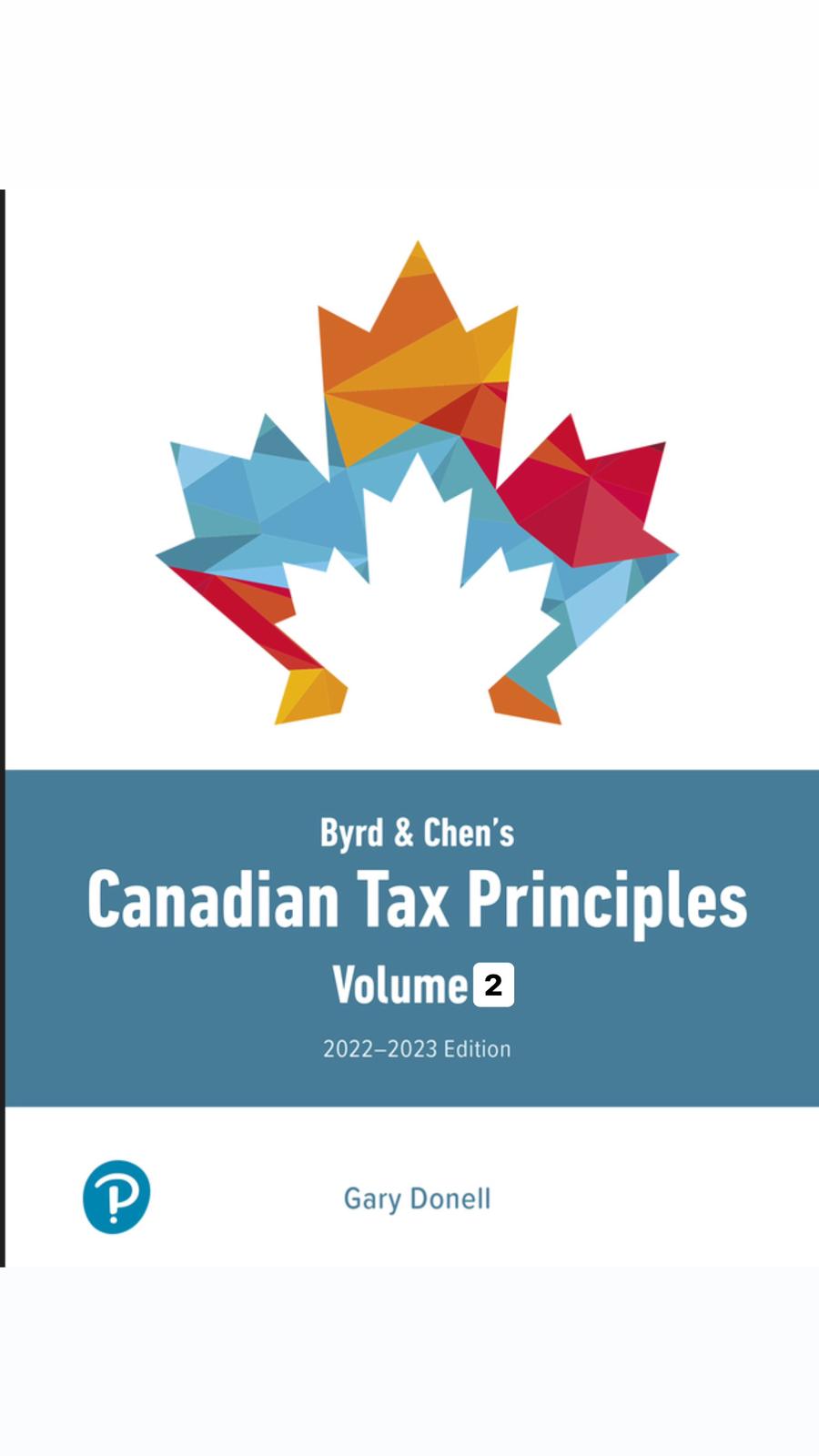
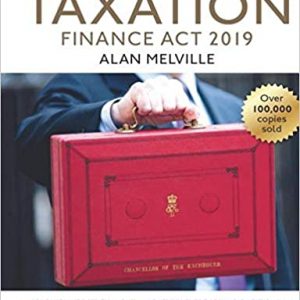
 Check the sample in the description
Check the sample in the description 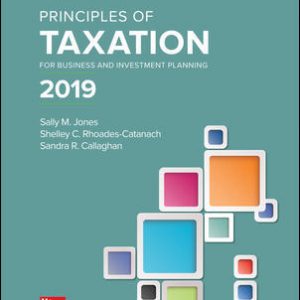
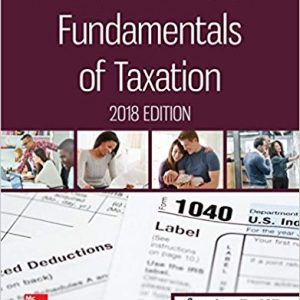
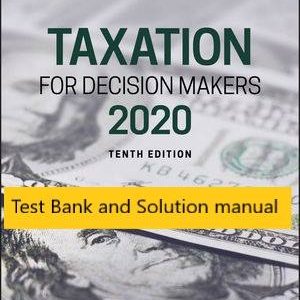

There are no reviews yet.